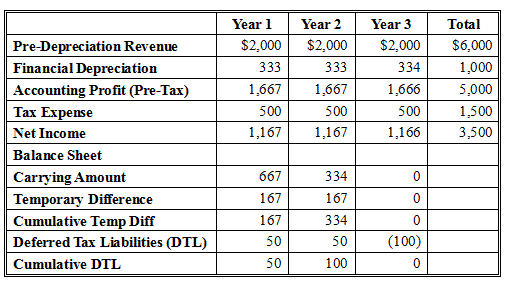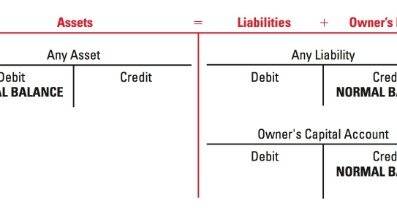
The Compound Interest Calculator below can be used to compare or convert the interest rates of different compounding periods. Please use our Interest Calculator to do actual calculations on compound interest. We provide answers to your compound interest calculations and show you the steps to find the answer. You can also experiment with the calculator to see how different interest rates or loan lengths can affect how much you’ll pay in compounded interest on a loan. In the examples used here, we are assuming the investor leaves all the interest in the account to continue earning compounding interest. If the investor withdraws some of the interest, the future value will not be as large as we have calculated because the total value earning interest has decreased.
But the longer you take to pay off your compound interest debts, the higher they will become. If the nominal annual interest rate is 4%, a beginning balance of $100,000 will be worth $219,112.31 after twenty years if compounded annually. Using our compound interest calculator, $2,000,000 invested can earn up to $335,480 in interest over five years. The compound interest definition is earning interest on your original money and the money you save.
Compound interest is calculated by multiplying the initial principal amount by one plus the annual interest rate raised to the number of compound periods minus one. The total initial principal or amount of the loan is then subtracted from the resulting value. If your credit card charges interest based on daily compounding (or using an average daily balance), then this spreadsheet may provide a way to analyze and track your credit card.
Or,
you may be considering retirement and wondering how long your money might last with regular withdrawals. You can include regular withdrawals within your compound interest calculation as either a monetary withdrawal or as a percentage of interest/earnings. We at The Calculator Site work to develop quality tools to assist you with your financial calculations.
We will change the assumptions slightly to make our calculation easier. Use the prior assumptions of an initial value of $1,000 and 200 days, and now set the interest rate to “annual” and 10.95%. This will yield the exact same amount as the daily interest rate of 0.03%.
Total Balance
You may find this useful for day trading or trading bitcoin or other cryptocurrencies. They may have other expenses they feel more urgent with more time to save. Yet the earlier you start saving, the more compounding interest can work in your favor, even with relatively small amounts. Saving small amounts can pay off massively down the road—far more than saving higher amounts later in life. More frequent compounding of interest is beneficial to the investor or creditor.
Interest may compound on a daily, monthly, annual or continuous schedule. The more frequently the sum is compounded, the faster it will grow. Using our compound interest calculator, $20,000,000 invested in a fixed deferred annuity can earn up to $3,354,800 in interest over five years. The interest is determined by the premium amount, the annuity’s term, and income withdrawn. Using our compound interest calculator, $10,000,000 invested in a fixed deferred annuity can earn up to $335,480 per year in interest over five years. Using our compound interest calculator, $5,000,000 invested in a fixed deferred annuity can earn up to $167,740 per year in interest over five years.
Total Deposits – The total number of deposits made into the investment over the number of years to grow. Compound interest has dramatic positive effects on savings and investments. As shown by the examples, the shorter the compounding frequency, the higher the interest earned.

Compounding is a very intriguing concept in finance, but some assumptions sometimes do not make much practical sense. Daily compounding assumes that the interest amount will be reinvested at the same rate for the investment period. Because of this, we might be unable to invest our money at the same rate, and our effective returns might differ. So, in essence, this theoretical representation demonstrates what we could achieve if we reinvested all the money at that rate each day. This formula is the projected rate of return on an asset or investment, even if it does not explicitly pay compounded interest. The CAGR is a form of the compound interest formula, but rearranged algebraically to solve for the interest rate using the beginning balance, ending balance and number of periods.
Earn The Highest Interest Rates On Savings Today
We can’t, however, advise you about where to
invest your money to achieve the best returns for you. Instead, we advise you to speak to a qualified financial advisor for advice based upon your own
circumstances. We’ll use a longer investment compounding period (20 years) at 10% per year, to keep the sum
simple. Instead, this type of bond is purchased at a discount to its original value and grows over time.
- Compound interest is often compared to a snowball that grows over time.
- Its articles, interactive tools and other content are provided to you for free, as self-help tools and for informational purposes only.
- Real returns were available because that strategy was perceived as risky.
- The MoneyGeek compound interest calculator is simple to use and understand.
- The Federal Reserve has started to taper their bond buying program.
- MoneyGeek’s compound interest calculator calculates compound interest using the above formulas.
Hence, if a two-year savings account containing $1,000 pays a 6% interest rate compounded daily, it will grow to $1,127.49 at the end of two years. For young people, compound interest offers a chance to take advantage of the time value of money. Remember when choosing your investments that the number of compounding periods is just as important as the interest rate. They invest $5,000 initially, then $500 monthly for 15 years, also averaging a monthly compounded 4% return. By age 65, your twin has only earned $132,147, with a principal investment of $95,000.
With daily compound interest, you will earn (or be charged) compound interest every day. With monthly, you’ll earn (or be charged) interest each month, and with annual, you’ll earn (or be charged) every year. Due to the way the compound interest formula works, the more frequently the pros and cons of leasing vs buying office space you compound, the more interest earned (or charged). You can even see how much you’d earn if you kept saving at that rate, or how much you’d be charged in compound interest if you wanted to pay off your debt. Compound interest is often compared to a snowball that grows over time.
Next, raise that figure to the power of the number of days it will be compounded for. Subtract the starting balance from your total if you want just the interest figure. The long-term effect of compound interest on savings and investments is indeed powerful. Because it grows your money much faster than simple interest, compound interest is a central factor in increasing wealth. Compound interest simply means you’re earning interest on both your original saved money and any interest you earn on that original amount. Although the term “compound interest” includes the word interest, the concept applies beyond interest-bearing bank accounts and loans, including investments such as mutual funds.
What’s the difference between daily, monthly and annual compounding?
Because interest compounds, the accrued interest allows your savings to grow faster. Because lenders earn interest on interest, earnings compound over time like an exponentially growing snowball. Therefore, compound interest can financially reward lenders generously over time. The longer the interest compounds for any investment, the greater the growth.
The Federal Reserve has started to taper their bond buying program. When there is a crisis of confidence in the monetary system as there was in the late 1970s and early 1980s one could beat inflation through interest earned on an ordinary passbook account. Real returns were available because that strategy was perceived as risky. To calculate the ending balance with ongoing contributions (c), we add a term that calculates the value of ongoing contributions to the principal balance. The future balance of $1,000 will be worth $1,127.49 after two years if the compounding period is daily.
Bear in mind that “8” denotes 8%, and users should avoid converting it to decimal form. Also, remember that the Rule of 72 is not an accurate calculation. Compounding can help fulfill your long-term savings and investment goals, especially if you have time to let it work its magic over years or decades.
Homeowners May Want to Refinance While Rates Are Low
Suppose you deposit $135 into an account every quarter and the bank promises to pay you interest of 6% compounded quarterly. You want to see how much you will have in the account at the end of three years. The way this works is that after the first quarter of the first year, you add $135 into your account. That amount then accrues interest over each quarter until the end of the three years. It compounds according to the compound interest formula eleven times.
Why Use A Compound Interest Calculator
The first way to calculate compound interest is to multiply each year’s new balance by the interest rate. This website is using a security service to protect itself from online attacks. There are several actions that could trigger this block including submitting a certain word or phrase, a SQL command or malformed data. Residential real estate returns were around 4.8% nationwide, though some local markets like New York City and San Franscisco have vastly outperformed.
Number of Years to Grow – The number of years the investment will be held. The conventional approach to retirement planning is fundamentally flawed. It can lead you to underspend and be miserable or overspend and run out of money. This book teaches you how retirement planning really works before it’s too late. As impressive as compound interest might be, progress on savings goals also depends on making steady contributions. Many or all of the products featured here are from our partners who compensate us.